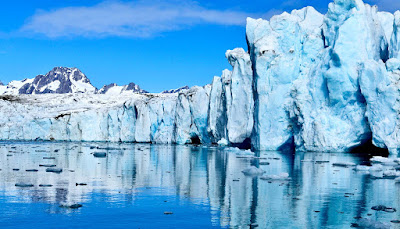WATER STUCK IN GLACIERS MAY CHANGE SEA LEVEL PREDICTIONS
HOLDING WATER
The resulting study, which shows up in Geophysical Research Letters, provides proof of glacier meltwater from the surface being kept within damaged, strong ice. While ice thawing at the surface has been well recorded, little is learnt about what happens listed below glacier surface areas, and this monitoring of fluid sprinkle kept within strong ice may discuss the complex flow habits of some Greenland glaciers. Cara Melihat Ayam Yang Paling Jago SabungAyam
"Points such as this do not constantly occurred, but when they do, that's the real ‘joy of the discovery' element of Planet scientific research," says coauthor Dustin Schroeder, an aide teacher of geophysics at Stanford University's Institution of Planet, Power & Ecological Sciences. "This paper not just highlights this component's presence, but gives you a way to observe it in time."
Surface meltwater plays an important role in Greenland by lubing the bases of ice sheets and affecting how the sea affects pulling back glaciers. The process of how the glaciers thaw and where the sprinkle flows adds to their habits in a changing environment, as these factors could change glaciers' reaction to thawing or impact the timeline for sea-level rise.
Knowing that some fluid is intercepted within glaciers after thawing externally may help researchers more accurately anticipate oceanic changes and help individuals get ready for the future, Schroeder says.
"All our forecasts of sea-level rise are missing out on this meltwater element," Schroeder says. "I think we're just simply recognizing how important it's to understand at an essential physical range what glacier meltwater does on its way from the surface to the bed."
SUSPICIOUS DATA
The scientists evaluated information from a high-resolution, low-power radio-echo sounder (ApRES) gathered per hour from May to November 2014. Acting such as an ultrasound for ice, the radar sends out a digital wave that jumps off variants in ice thickness to produce an picture of ice framework that demonstrates how quickly the ice melts or moves in time.
When the group outlined the radar information, it looked questionable, says Kendrick, that was lead writer of the paper. They evaluated ideas such as temperature level variants and battery changes to represent what they saw, after that wondered if sprinkle within the ice was triggering the peculiarity.
By looking at a various aspect of the information, Kendrick noticed that the peculiarities originating from deep within the glacier associated with information from a close-by weather terminal indicating that the glacier had been thawing at the moment the scientists gathered the information. That finding supported the idea that they were spotting sprinkle that had melted externally and after that trickled down right into the glacier, where it obtained caught.
"This is a brand-new way you could use these tools to answer clinical questions—instead of simply looking at changes in the ice density, we're also looking at changes in the ice residential or commercial homes itself," says coauthor Winnie Chu, a postdoctoral scientist in Schroeder's laboratory. "Alex set up the groundwork for attempting to understand how this meltwater storage space changes through time."


